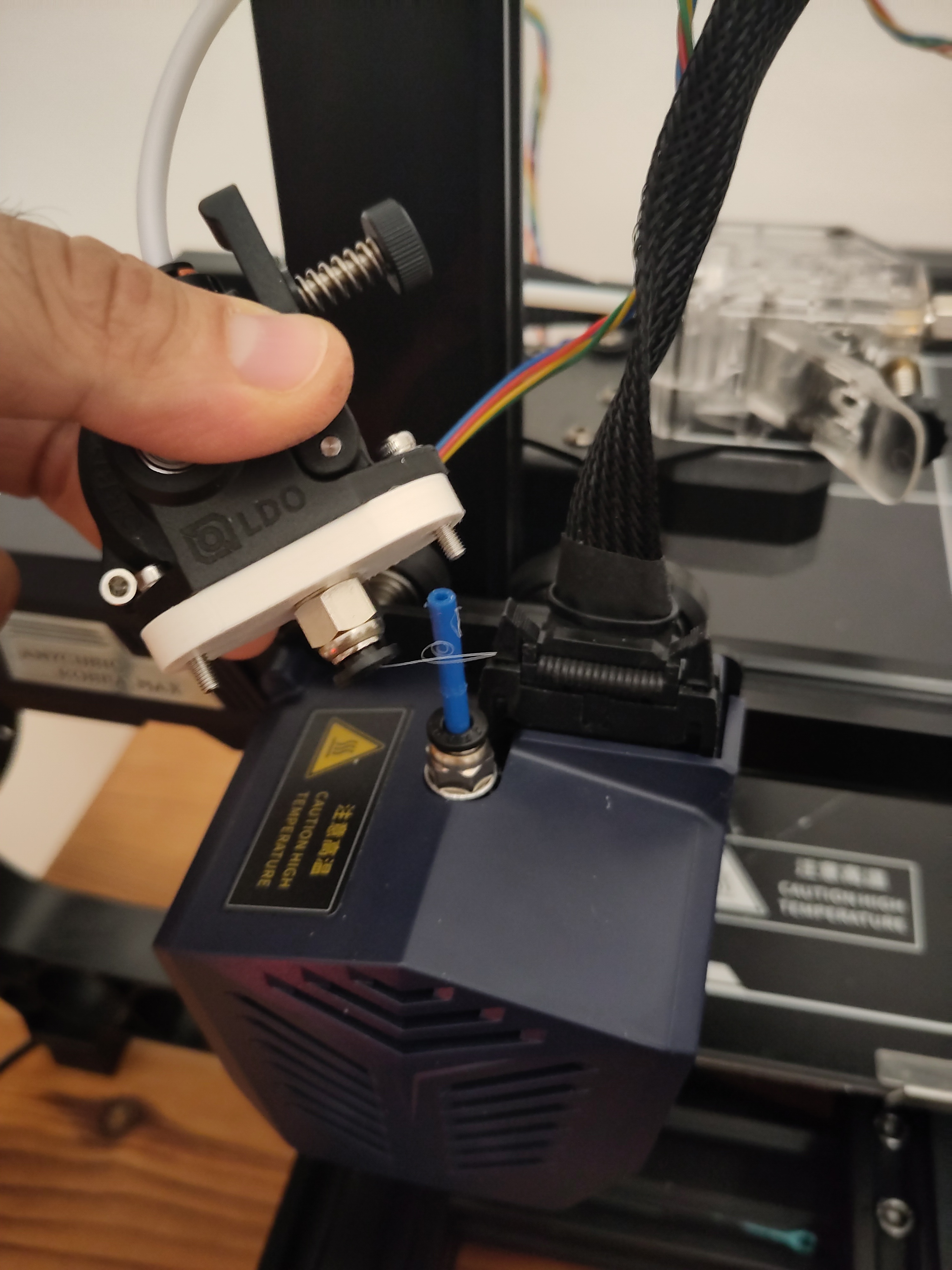I've been looking to switch the bowden extruder for a direct drive type on my Anycubic Kobra Max. I've always hated the blobbing and stringing due to the bowden mechanism. After having received an LDO Orbiter v2.0 today and a bit of tinkering, I now have what I was after :).

The easiest way to install the new extruder was to simply attach it on top of the existing hotend via a small bowden tube and a coupler. I had to design a little adapter flange that attaches to the extruder and accepts a tube coupler. The extruder now dangles in the air. For now this didn't seem to cause any trouble. In the future I might install it using a fixed bracket though.


While I was at it, I also added some additional insulation to the bed (300x300mm in size, so I had to cut a bit). I'm not sure if it really helps a lot but the bed now heats up from 20° to 60° in 3:40 instead of in 4:00. The printer also seems to consume 100mA less (very inaccurate mental averaging of power meter).


Bonus:
First functional part printed with new setup, rectifying some of the original parts issues.

Up next: Get a second Orbiter and have it feed a mixing hotend. My goal is to make nice Lampshades.






